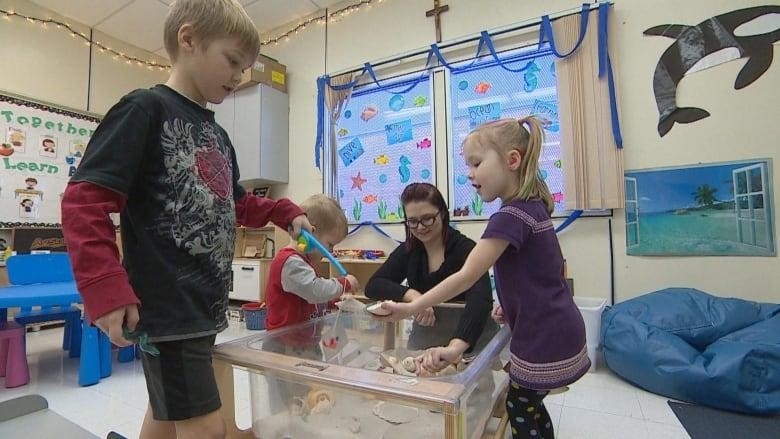
Every school should offer ASL as an option. Its need isn’t just for deaf people,’ says a parent
Allison Kalinowski drives her three kids from Warman to Saskatoon, which is 20 kilometers away, at least twice a week so they can go to the only preschool in the province that teaches both American Sign Language and English in the same building.
“Chloe is five years old, and she is the only one who can’t hear. “Everyone else can hear, but this program is for parents or siblings of deaf children, as well as anyone else who is part of the deaf community,” she said.
“Teach everyone sign language and get everyone involved so that the child doesn’t feel so alone.”
The 4C preschool is a program at St. Augustine School. The name stands for children, communicating, and connecting in the community. The program is based on play and focuses on the family. It aims to speed up speech and emotional development and help children learn how to communicate well.
“No one in the health region” told Kalinowski about the program, she said. She said that they were more concerned with “fixing” kids than with accepting them “as a whole person.”
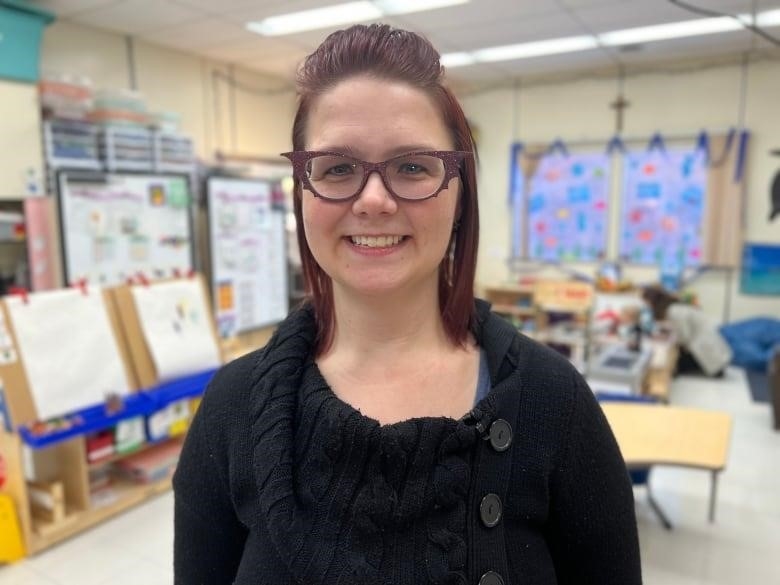
Kalinowski said that Chloe’s face lights up when someone signs to her, and the program helps them connect with the deaf community.
“Everyone should be able to learn ASL in every school,” she said, adding that others should work to make the world more welcoming.
“Why should only my daughter learn or try harder to hear just to be included?”
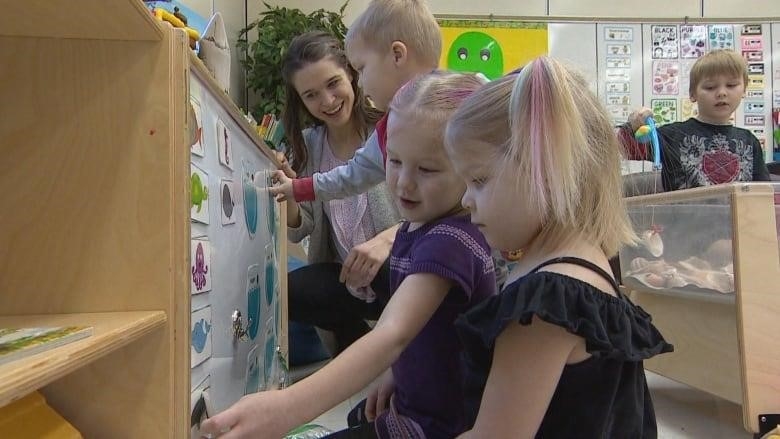
Kalinowski said that she feels lucky to be part of the deaf community. She said that her daughter’s trips to summer camps for deaf families helped her realize that “she is not so alone.”
She said there is a big need in the community and the province because she knows parents who drive 50 kilometers or more from Waldheim, Saskatchewan, to put their kids in a preschool in Saskatoon.
“Every deaf child needs a role model,” says a teacher
In an interview with an interpreter, Nicole Musey, a deaf teacher at the 4C preschool, said that she didn’t have many role models when she was growing up deaf in Prince George, B.C.
She is trying to be a good example for them.
WATCH | Why many people in the Deaf community want more preschools like this one in Saskatchewan:
Musey mostly works with children ages 3 to 4 who are deaf, hard of hearing, children of deaf adults (CODA), or on the autism spectrum. In the last couple of years, five to ten students have been in her classroom.
Musey has family events on Fridays to build a “sense of community.”She said that the program gives kids the choice to learn ASL, English, or both.
“Each child who is deaf or hard of hearing is different. It is a range. Hearing loss comes in different forms. Some deaf kids like to talk, others like to sign, and some do both.
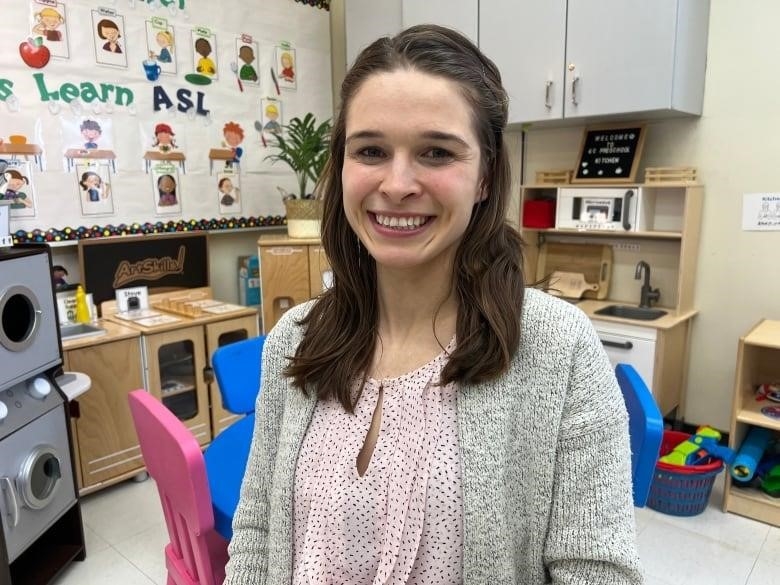
Musey said that programs like hers help children younger than five develop their speech and brains because early exposure is so important. She said that in Saskatchewan, parents are usually told to wait until speech doesn’t work before turning to ASL, which she said “is often too late.”
She said that the government of Saskatchewan closed the last special school for the deaf in 1990, putting children with hearing problems back into the regular school system.
A 2016 inquiryBy the Saskatchewan Human Rights Commission led to the creation of a group to fight against “systemic discrimination” against deaf and hard of hearing people in the province. It also made it possible for 4C Preschool to open in 2018.
She said that children learn ASL like they learn any other language, with the way they use their hands changing as they learn more.
Musey wants to get rid of the idea that learning ASL slows down speech development. She said that it is better to be exposed to both languages.
“Every child who is deaf needs a role model. If they see an adult who looks like them, it gives them confidence that they can handle the world. People only care about learning language, but what about who they are as deaf people?”Are they only defined by what they hear?”
Musey wants the same model to be used in more Saskatchewan schools.
“Our classroom is like a mix of two different worlds because everything is labeled in both English and finger-spelled words.”
The Saskatchewan Deaf and Hard of Hearing Services program is in charge of running the preschool. Musey said that the program is also trying to reach out to communities in the north to offer services.
Bill C-81 passed in 2019 at the federal level, recognizing ASL, Indo-Pakistani Sign Language, and Langue des signes du Québec as the main languages for deaf people. Similar pieces of legislation have been passed in B.C. and Alberta, and Saskatchewan is waiting for the royal assent on its own.
“Need in the community”: a worker for young childre
Robyn Holmes works at Saskatchewan Deaf and Hard of Hearing Services as a worker for early childhood and family services. She is proud to be deaf, and her two kids go to the preschool where she works. So that she could learn ASL, her parents moved from South Africa to Canada.
“My kids can both hear and talk. “They go to preschool because they’re CODA,” she said with the help of an interpreter.
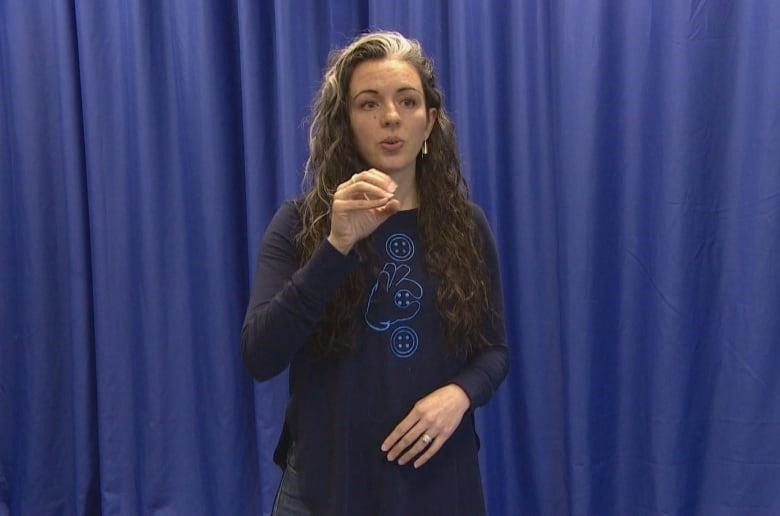
Holmes said that her kids now prefer to communicate with ASL.
“It’s not just about being able to hear, but also about learning sign language and focusing on language acquisition and the kids’ ability to use their eyes to take in information and their hands to make words and knowledge,” she said, pointing out the benefits of the 4C preschool’s “holistic” approach.
Holmes said that because ASL is taught the same way from preschool to elementary school, kids don’t lose their language skills. Holmes said that a program like the preschool could be used at all levels of schooling.
“There are some adults here who are having trouble getting jobs. Their levels of literacy are very low because they haven’t been exposed to these things. “We don’t want those gaps or missed chances,” she said.
“We want to break down those barriers for the sake of future generations.”
Sue Schmid is thanked by CBC Saskatchewan.For helping me figure out what some of the interviews in this piece were saying.
